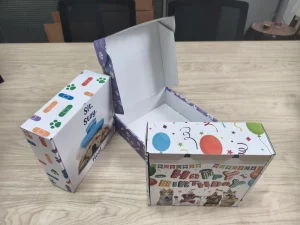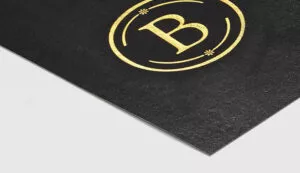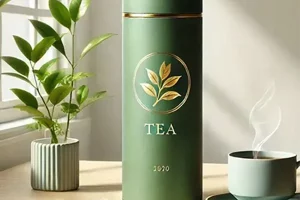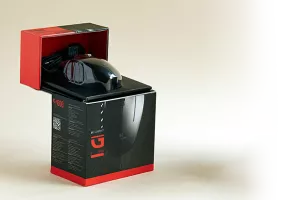Have you ever wondered if there’s a real difference between a cardboard box and a corrugated box? The terms are often used interchangeably, but they are distinct in some key ways.
Cardboard boxes are typically made from a single layer of paperboard, while corrugated boxes consist of three layers, including a fluted layer between two flat layers. This makes corrugated boxes stronger and more protective.

Now that we’ve established the difference, let’s dive deeper into the unique features and uses of corrugated boxes and explore the advantages and disadvantages of using them.
What is a disadvantage of corrugated cardboard?
Though corrugated cardboard is widely used for its strength and versatility, it comes with a few drawbacks that may impact your packaging decisions.
A major disadvantage of corrugated cardboard is its susceptibility to moisture. When exposed to water, it can weaken, losing its strength and protective qualities.

One of the most significant drawbacks of corrugated cardboard is its vulnerability to moisture. Since it is made from paper fibers, corrugated cardboard can absorb water easily. When exposed to moisture, the box can become soft and lose its structural integrity. This makes it unsuitable for shipping items that need to be protected from water, especially in humid or wet conditions. This can lead to products being damaged during transportation or storage.
Another disadvantage is that corrugated cardboard, while durable, can be easily crushed under heavy pressure. While it offers great protection from impacts, excessive weight or pressure can cause the box to collapse or bend. This is particularly problematic for fragile items, which may require more sturdy materials.
Additionally, the production of corrugated cardboard can have a higher environmental impact compared to other materials. While it is recyclable, the manufacturing process requires significant amounts of energy and resources. The need for paper pulp and the chemical processes involved in producing corrugated cardboard can contribute to deforestation and air pollution, especially if the paper isn’t sourced from sustainable sources.
In conclusion, while corrugated cardboard is strong and effective for many uses, its sensitivity to moisture and environmental impact should be considered when choosing packaging solutions.
What is the alternative for corrugated box?
Looking for alternatives to corrugated boxes? There are several materials and packaging options that could serve your needs just as well, if not better.
Some common alternatives to corrugated boxes include plastic packaging, molded pulp, and flexible packaging. These options offer different benefits depending on the product being shipped.

There are several alternatives to corrugated boxes that can provide similar or even better benefits depending on your specific needs. One of the most popular alternatives is plastic packaging. Plastic offers superior moisture resistance, making it ideal for shipping products that need to stay dry, such as electronics or food. It is also highly durable and resistant to impact, which can be beneficial for fragile items. However, the environmental impact of plastic packaging is a significant concern, as it is not biodegradable and can take hundreds of years to break down in landfills.
Another alternative is molded pulp packaging, which is made from recycled paper products. Molded pulp is a sustainable option and is often used for fragile products like eggs or electronics. It offers a good level of protection and is lightweight, but it may not be as durable as corrugated boxes, especially for heavier items. However, it is more eco-friendly and easier to dispose of compared to plastic.
Flexible packaging, such as bags or pouches, is another option. These packages are lightweight, cost-effective, and suitable for a variety of products. They are especially popular in the food and beverage industry. However, they may not provide the same level of structural protection as boîtes en carton ondulé or plastic packaging, so they are often used for non-fragile items.
In conclusion, the right alternative for corrugated boxes depends on factors like product weight, fragility, and environmental concerns. Exploring these alternatives can help you find the most suitable packaging solution.
Why is corrugated so expensive?
Corrugated packaging seems expensive at times, but there are several reasons behind its high cost. Let’s break down why corrugated boxes can be pricier than you might expect.
The cost of corrugated boxes is driven by factors such as the quality of materials, production processes, and the demand for eco-friendly solutions1. The manufacturing of corrugated boxes can also be labor and energy-intensive.

Corrugated boxes are often more expensive than other packaging materials, and there are a few key reasons behind this. First, the materials used to make corrugated boxes are more costly than those used for simple paperboard or plastic packaging. The production of corrugated boxes involves multiple layers of paper, including a fluted layer between the liners, which increases material costs. The quality of the paper used also plays a role; higher-quality paperboards are more expensive, and they are often used to produce boxes that need to withstand greater pressure or carry heavier loads.
Another factor contributing to the expense is the manufacturing process itself. Producing boîtes en carton ondulé2 requires specialized equipment to create the fluted paper and combine the layers of paperboard. This process is more labor-intensive and requires higher energy inputs compared to the production of simpler packaging materials. Additionally, the demand for custom-sized or printed boxes can increase costs, as it requires more precise manufacturing and design work.
The push for more sustainable packaging also adds to the price. As consumers demand more eco-friendly products, manufacturers are using recycled paper and sustainable materials in corrugated boxes, which can be more expensive than traditional options. The cost of transporting the raw materials and finished products can also drive up the overall price of corrugated packaging, especially when shipping internationally.
In short, the cost of corrugated boxes is influenced by the quality of materials, production processes, and the increasing demand for eco-friendly packaging solutions.
What is the most common style of corrugated box?
When it comes to corrugated boxes, there are various styles to choose from. But which one is the most common? Let’s explore the most widely used style of corrugated box.
The most common style of corrugated box is the regular slotted container (RSC)3. This box style is widely used due to its versatility and efficiency in shipping.

The regular slotted container (RSC) is by far the most common style of corrugated box. This style is highly favored because of its simplicity and ease of use. RSC boxes are made from a single sheet of corrugated cardboard4, which is cut and scored to form a rectangular box with four flaps. The two outer flaps are of equal length and overlap when closed, providing a secure seal for shipping.
RSC boxes are versatile and can be used for a wide range of products, from small items to larger bulk shipments. They are particularly popular in the retail and e-commerce industries, where standardized packaging sizes are necessary for efficient storage and shipping. The ease of assembly and availability of pre-made sizes make RSC boxes a go-to option for many businesses.
Another reason RSC boxes are so common is that they are cost-effective. Because they are made from a single sheet of corrugated material, they are less expensive to produce compared to more complex box styles, such as die-cut or custom boxes. This makes them an ideal choice for businesses looking to cut down on packaging costs.
Overall, the regular slotted container is the most commonly used style of corrugated box due to its simplicity, efficiency, and affordability.
Do corrugated boxes attract bugs?
A common concern with using cardboard and corrugated boxes is whether they attract bugs. Let’s look into this issue and see if it’s a real problem.
While corrugated boxes themselves do not attract bugs, they can harbor insects if left in damp or unsanitary conditions. Keeping them in dry, clean spaces can prevent this.

Corrugated boxes themselves do not inherently attract bugs. However, they can become a breeding ground for pests if they are exposed to damp, unsanitary, or infested environments. Insects like ants, termites, and cockroaches are drawn to cardboard and paper materials because they can use the fibers for nesting. If a corrugated box is stored in a humid or moist area, it can also create a favorable environment for mold and mildew, which can further attract pests.
One of the main reasons bugs may be drawn to corrugated boxes is because of food remnants or spills. If the boxes are used for packaging food items, small crumbs or residue left behind can attract pests. To prevent this, it is important to clean the boxes thoroughly before use and store them in a clean, dry space.
Another concern is the storage of boxes in areas that are already infested with bugs, such as warehouses or basements. In these cases, the boxes may not be the cause of the infestation, but rather a place where pests can hide and breed. Keeping storage areas well-maintained and free from pests is key to preventing this issue.
In conclusion, corrugated boxes themselves do not attract bugs, but they can become a shelter for pests if not stored properly. Keeping boxes in clean, dry conditions can help prevent this issue.
Conclusion
In summary, while corrugated boxes offer excellent strength and protection, they do have drawbacks, including cost and moisture sensitivity. Understanding the alternatives and common styles can help you make the right choice.
-
Discover the advantages of eco-friendly packaging and how it impacts costs and sustainability. This resource provides valuable information. ↩
-
Understanding the cost factors of corrugated boxes can help you make informed packaging decisions. Explore this link for detailed insights. ↩
-
Explore the advantages of RSC boxes, including their cost-effectiveness and versatility in shipping various products. ↩
-
Learn about corrugated cardboard’s properties and its essential role in creating durable and efficient packaging solutions. ↩








